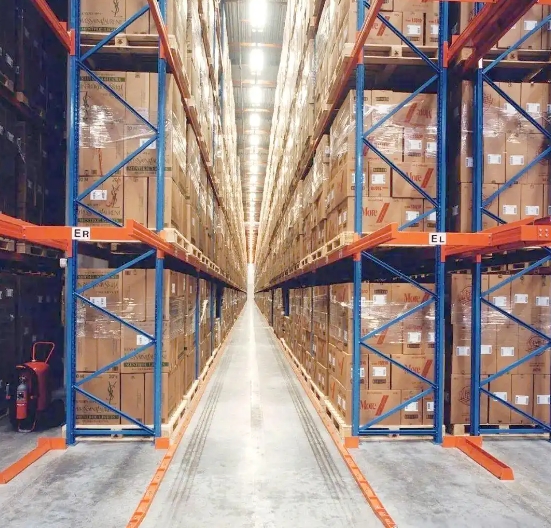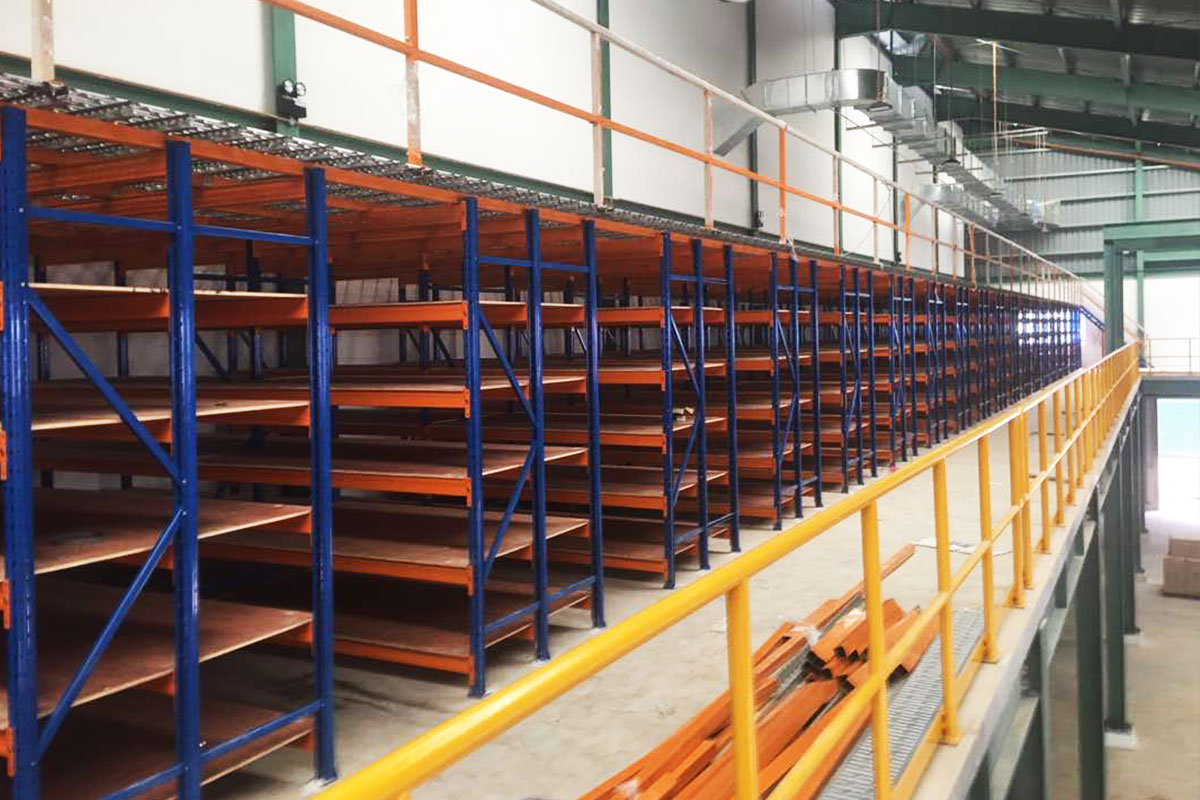In today's fast-paced industrial and logistics sectors, maximizing space and ensuring durability are top priorities. If you're involved in warehouse management, manufacturing, or any operation requiring organized storage, you've likely encountered the term "structural steel storage racks." These systems are more than just metal shelves; they are the backbone of modern storage solutions, designed to handle heavy loads, optimize space, and enhance workflow efficiency. Whether you're setting up a new facility or upgrading an existing one, understanding the core elements of structural steel storage racks can transform your operations. This article delves into five critical areas that define these racks, from their robust construction to their versatile applications, providing you with actionable insights to make informed decisions. Let's explore how structural steel storage racks can revolutionize your storage strategy without the fluff—just solid, practical information.

The foundation of any reliable storage system lies in its design and construction, and structural steel storage racks excel in this regard. These racks are engineered from high-strength steel, which is known for its exceptional load-bearing capacity and resistance to environmental factors like corrosion and impact. Typically, the design process involves precise calculations to ensure that the racks can support specific weight loads, often ranging from a few hundred kilograms to several tons per level. Key components include upright frames, beams, braces, and connectors, all fabricated to interlock seamlessly for stability. The steel used is often hot-rolled or cold-formed, depending on the application, with options for galvanization or powder coating to enhance durability. This meticulous construction ensures that structural steel storage racks can withstand the rigors of daily use in demanding environments, such as warehouses and distribution centers. Moreover, modular designs allow for easy customization, enabling businesses to adapt the racks to unique spatial constraints and inventory needs. By focusing on robust engineering, these racks minimize the risk of failure and maximize safety, making them a preferred choice for industries where reliability is non-negotiable.
When it comes to storage solutions, the benefits of structural steel storage racks are numerous and impactful. First and foremost, their durability stands out—steel's inherent strength means these racks can handle heavy, bulky items without sagging or deforming over time. This longevity translates to cost savings, as they require fewer replacements compared to alternatives like wood or plastic. Additionally, structural steel storage racks offer superior space utilization; by enabling vertical storage, they free up valuable floor space, which is crucial in facilities where every square meter counts. Efficiency is another key advantage: these racks facilitate easy access to stored goods, often incorporating features like adjustable shelves and pallet-friendly designs that streamline inventory management. Safety is also enhanced, as steel's fire-resistant properties and ability to integrate with seismic bracing reduce risks in emergency situations. From an environmental perspective, steel is highly recyclable, aligning with sustainable business practices. Overall, the advantages of structural steel storage racks make them a smart investment for improving operational throughput and reducing long-term expenses.
Structural steel storage racks are incredibly versatile, finding applications across a wide range of industries. In logistics and warehousing, they form the core of pallet racking systems, enabling efficient storage and retrieval of goods in high-volume environments. Manufacturing plants rely on them for organizing raw materials and finished products, often in conjunction with automated retrieval systems to boost productivity. The retail sector uses these racks in distribution centers to manage inventory flow, ensuring timely restocking and minimizing stockouts. Even in specialized fields like cold storage or automotive parts handling, structural steel storage racks are adapted with coatings or configurations to resist moisture and temperature extremes. Their flexibility allows for use in settings as diverse as airports for baggage handling and libraries for archival storage. By catering to diverse needs, these racks demonstrate their adaptability, proving that no matter the industry, structural steel storage racks can be tailored to enhance efficiency and organization.

Proper installation and maintenance are crucial for maximizing the lifespan and performance of structural steel storage racks. Installation typically begins with a site assessment to evaluate floor conditions, load requirements, and spatial layout. Professional installers follow manufacturer guidelines and industry standards, such as those from the Rack Manufacturers Institute (RMI), to ensure structural integrity. This process involves assembling components securely, using torque wrenches for bolts, and verifying alignment to prevent imbalances. Once installed, regular maintenance is essential; this includes routine inspections for signs of damage, like dents or corrosion, and checking that loads are within specified limits. Cleaning schedules should be established to remove debris that could compromise stability, and any repairs must be addressed promptly to avoid accidents. Training staff on proper usage—such as avoiding overloading or impacts from equipment—is also key. By adhering to these best practices, businesses can extend the life of their structural steel storage racks and maintain a safe working environment, ultimately protecting their investment.
Safety is a paramount concern when dealing with structural steel storage racks, given their role in supporting heavy loads in busy environments. These racks must comply with international standards, such as those set by OSHA (Occupational Safety and Health Administration) or EN standards in Europe, which cover aspects like load capacity, seismic resistance, and fire safety. Key safety features include load beams with safety locks to prevent accidental dislodgement and upright guards to protect against impacts from forklifts. Regular risk assessments should be conducted to identify potential hazards, such as uneven loading or environmental factors like humidity that could weaken the steel. Additionally, proper labeling of weight limits and aisles helps prevent overloading and ensures clear pathways. In the event of damage, immediate action is required—such as isolating the area and conducting repairs—to prevent collapses. By prioritizing safety through adherence to standards and proactive measures, businesses can mitigate risks associated with structural steel storage racks and foster a secure workplace.
Investing in structural steel storage racks is not just about initial costs but also about long-term value. While the upfront expense might be higher than alternatives like wooden shelving, the durability and low maintenance requirements of structural steel storage racks lead to significant savings over time. For instance, their resistance to wear and tear reduces the need for frequent replacements, and their modular nature allows for easy expansions or reconfigurations as business needs evolve. Energy efficiency can also play a role, as optimized storage layouts minimize the space needed for lighting and climate control. When evaluating cost-effectiveness, consider factors like return on investment (ROI) through improved inventory turnover and reduced labor costs. Many businesses find that the initial outlay for structural steel storage racks pays off within a few years, thanks to enhanced operational efficiency and fewer disruptions. By viewing these racks as a strategic asset rather than a mere expense, companies can unlock sustained value and competitive advantage.
Q1: What are the main types of structural steel storage racks available?
A1: The main types include selective pallet racks, which allow direct access to each pallet; drive-in/drive-through racks for high-density storage; cantilever racks for long or bulky items; and push-back racks that use a last-in, first-out system. Each type is designed for specific storage needs and load requirements, making structural steel storage racks highly adaptable.
Q2: How do I determine the right load capacity for my structural steel storage racks?
A2: To determine load capacity, assess the weight and dimensions of your stored items, consult with a structural engineer or supplier, and refer to industry standards like those from the Rack Manufacturers Institute. It's crucial to factor in dynamic loads from equipment and potential seismic activity to ensure safety and compliance.
Q3: Can structural steel storage racks be customized for unique spaces?
A3: Yes, structural steel storage racks are highly customizable. Manufacturers can adjust heights, depths, and configurations to fit irregular layouts, and options like mezzanine integrations or specialized coatings are available. This flexibility allows businesses to optimize space without compromising on functionality.
Q4: What maintenance is required for structural steel storage racks?
A4: Regular maintenance includes visual inspections for damage, cleaning to prevent corrosion, and checking bolt tightness. It's recommended to schedule professional audits annually and address any issues promptly to maintain integrity and safety.
Q5: Are structural steel storage racks environmentally friendly?
A5: Yes, structural steel storage racks are environmentally friendly because steel is 100% recyclable, and their long lifespan reduces waste. Many manufacturers use sustainable practices, such as energy-efficient production and coatings that minimize environmental impact, aligning with green initiatives.
In conclusion, structural steel storage racks are a cornerstone of efficient and safe storage solutions across industries. By understanding their design, advantages, applications, installation, safety, and cost-effectiveness, you can make informed choices that drive operational success. If you're considering an upgrade, remember that these racks offer a blend of durability and flexibility that pays dividends over time.
 Wechat
Wechat
 Whatsapp
Whatsapp